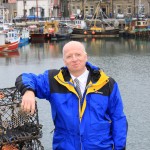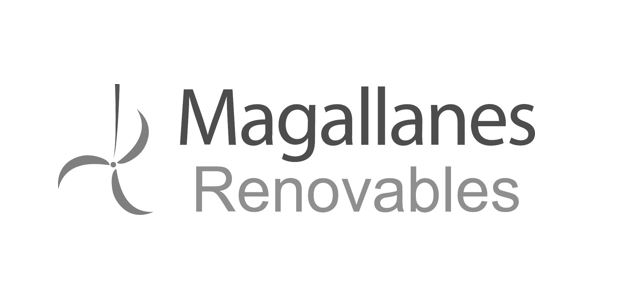Blog: In the wake of wind
In the wake of Storms Barbara and Connor, EMEC’s managing director, Neil Kermode, urges the UK to learn from the past and not to make the same mistakes in the development of ocean energy as were made thirty years ago with wind.
As assorted storms battered the UK over Christmas I took the opportunity to go up to Burgar Hill in Orkney to see how things had fared.
As expected, it was fresh and the view stunning. The wind turbines up there were turning majestically in the wind and the scene looked exactly as it was a few months ago. In other words: Storms Barbara and Connor had come and gone and changed nothing. The site was still there and the technology still worked calmly and uncomplainingly.
Burgar Hill now has six large wind turbines on it, but back in the ’80s it was the site of the UK’s second wind energy research programme. The UK joined the clamour to try and harness the clearly abundant wind energy potential. After a number of experimental machines were tried it then made the fashionable leap of faith and jumped to large scale machines, electing to miss out some intermediate scales and went for the record breaking 3MW machine.
It worked and was a great success in its day. There were of course teething troubles as there are in any experiment, but unfortunately these coincided with a loss of policy direction. Decisions were stalled, momentum lost and eventually the national programme shut down and the site was shut down. Over the years, the turbines were abandoned and eventually felled and all that is there now to tell of the UK’s world lead is a mute concrete foundation: a foundation now surrounded by wind turbines from other countries all doing what we set out to do – sustainably harvest our natural resources and build a manufacturing industry. It is hard not to see the foundation as the tomb stone of British wind energy research.
If you are interested, then the video ‘In the wake of wind’ tells the story through the participants in the endeavour.
In the Wake of Wind from Alex Robertson on Vimeo.
Managing EMEC, the world’s leading marine energy research centre, I am acutely aware that there is a risk that the UK could make the same decisions again if we do not learn from our history. We have achieved huge progress with machines now out at sea generating from the tides. We are encountering and solving challenges daily, and building British businesses in the process. Logically we will be part of the industrial renaissance, but only if people know it is happening and want the success to continue. I’m therefore keen to make sure we can take lessons from our past and use them to build a profitable future.
I said earlier that it was the site of the second research programme. Just to the north of Burgar Hill stands Costa Head, the site of the first programme. In 1951 the world’s first grid-connected aerogenerator, as it was then called, was installed. There is an excellent video of the endeavour here (spoiler alert: Health and Safety has moved on a bit!). That British built pioneering machine disintegrated some years later during a storm as the loads from the cliff top turbulence were not fully understood. But it worked, and showed these renewable energy machines could contribute to the grid.
Interestingly, the area is also now the subject of an application for a commercial wind array comprising five machines each approximately 80 times bigger than their 1950s predecessor. The machines proposed are Danish or German and are now a fully commercial prospect. The company promoting the scheme, the investors, the insurance companies and the grid operators have absolute confidence that the machines will work when they go up.
So this is a perfect illustration that onshore wind has moved though not just Technology Readiness Levels 1 to 9, it has also moved through the Commercial Readiness Levels and there is now a reliable investable product.
Did that happen in one jump?
No. It happened because there was solid, incremental progress; built layer by layer based on experience. We learned by doing.
But of course it wasn’t us that learned. It was the manufacturer and their chosen, largely local, supply chain that learnt. They got better and better and became more and more investable and employable. Their experience make them the people to go to when you want a product built on time and right first time. That is why there are German and Danish companies running around Orkney today.
They now have an industry.
And to be blunt: that should have been us.
So as I came down from Burgar Hill I looked out over the tidal rip flowing between the islands and decided that we have to use 2017 to build the next layer of success in our industry. We have seen fantastic progress from some of our developers as they begin to flex their wings (or should that be fins?) and deploy around the world. EMEC stands ready to continue to help them and those other developers coming along with new and exciting ideas and schemes.
Just as the wind industry was not an overnight success, we know that the travails of these modern marine innovators and pioneers are laying down the foundations of future success. Marine energy will contribute to our sustainable energy system; the question we have to help answer is: will it be us who lead the industrialisation?
At EMEC we are determined that it will.

Neil Kermode
EMEC Managing Director





